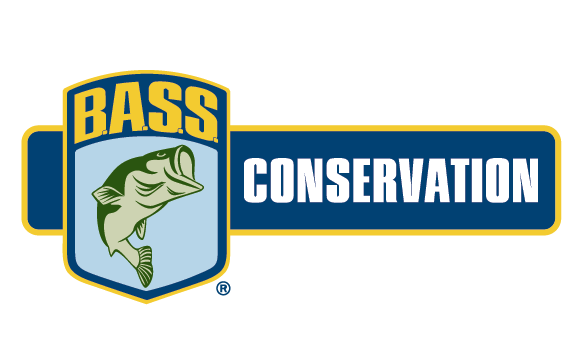
PHOENIX, Ariz. – Disregarding concerns of state resource managers and sportsmen groups, the U.S. Army Corps of Engineers initiated a drawdown that likely will decimate the sport fishery at Arizona’s Alamo Lake.
“Game and Fish estimates the rapid drawdown of the lake at this time of year will disrupt reproduction and recruitment in fish such as largemouth bass and black crappie, as they are currently in a pre-spawn condition in Alamo Lake and expect to be spawning during the proposed drawdown,” Arizona Game and Fish (AGF) said in an official statement.
“In addition, as the lake is drawn down, the shallow areas will dry, and most, if not all, of the current spawning area and eggs would likely be lost.”
At about the same time, a large coalition of sportsmen and conservation groups, including B.A.S.S., sent letters to members of the Senate and U.S. House of Representatives, asking for Congressional assistance to prevent similar incidents at other fisheries managed by federal agencies.
“The Corps is not being a good partner and not complying with the Fish and Wildlife Coordination Act (FWCA) that says the feds will cooperate fully with state agencies who are responsible for managing fish and wildlife,” said Gene Gilliland, B.A.S.S. National Conservation Director. “FWCA was amended in 1946 to require consultation with the U.S. Fish and Wildlife Service and fish and wildlife agencies of states where any body of water is controlled or modified by any federal agency, in order to prevent loss and damage of wildlife resources.
“The Corps routinely ignores this rule,” he added. “Some district offices are worse than others.”
Intended to allow for inspection and maintenance of the earthen dam completed in 1968, the high-flow withdrawal at Alamo is expected to drop the water level 10 feet in the impoundment on the Bill Williams River above Lake Havasu. At capacity, the popular desert fishery can sprawl across more than 18,000 acres, but that’s a rare occurrence. It was at 3,500 acres when the drawdown began on March 12, after a federal court denied Arizona’s request for a temporary restraining order.
The state contended that the Corps violated the National Environmental Policy Act process by failing to adequately evaluate the impacts that a release this time of year would have on aquatic wildlife and recreation. It also argued that the withdrawal would violate the Administrative Procedures Act by failing to comply with the Corps’ binding operational criteria to complete inspection and maintenance under normal operations as prescribed in the “Alamo Dam and Lake Water Control Manual.”
Jim Ammons, chairman of the Arizona Game and Fish Commission, added, “We didn’t think this legal action was an egregious demand. We don’t object to the project, just to the timing of it.
“The Corps has failed to explain why the timing in March is the only option for it to achieve its objectives. We still believe it has other feasible options to do this project later in the year, when it would have less impact on the fishery and the local economy.”
State surveys indicate that the La Paz County benefits significantly because of the Alamo sport fishery. The lake’s recreational worth has declined since it was valued at $5,608,937 in 2007. But AGF said that threats of Alamo State Park closing and fluctuating water levels “impacted visitation by fishermen.”
Most recently, popularity had been on the increase as the bass and crappie fishery improved despite droughts.
“The loss of that segment of the fish population at Alamo not only would have biological impacts to the fishery, it would include negative impacts to the state and local economy,” AGF said.
“Alamo Lake State Park draws visitors from around the state for its premier bass and crappie fishing.”
Before the drawdown commenced, the agency added, anglers were “reporting some of the best fishing at Alamo Lake in recent years.”
Although it’s too late for Alamo, the coalition of sportsmen and conservation hopes that Congress will be help protect other fisheries through the upcoming Water Resources Development Act.
“Fish and Wildlife Coordination Act (FWCA) review is a longstanding, mandatory and critically important component of water resources planning,” their letters said. “Unfortunately, the Corps and many other federal agencies subject to the act often ignore the recommendations of state and federal fish and wildlife experts made pursuant to the FWCA during project planning, creating unnecessary, avoidable impacts and leading to inadequate mitigation plans.
“Agencies sometimes fail to consult at all with the federal and state fish and wildlife agencies on projects that affect the nation’s waters, despite the FWCA’s clear requirement to do so.”
The groups asked Congress to use the WRDA to ensure that federal agencies initiating water resource projects follow FWCA recommendations “derived from the special expertise of federal and state fish and wildlife experts …
“Congress should also reaffirm the importance of the FWCA consultation process and clarify that its applies to reassessments of project operations.
“Evaluating fish and wildlife impacts and mitigation opportunities early in the planning process, and in accordance with the extensive and carefully developed recommendations of federal and state fish and wildlife experts, is a common sense, cost-effective way to improve planning efficiency and reduce avoidable impacts.”





